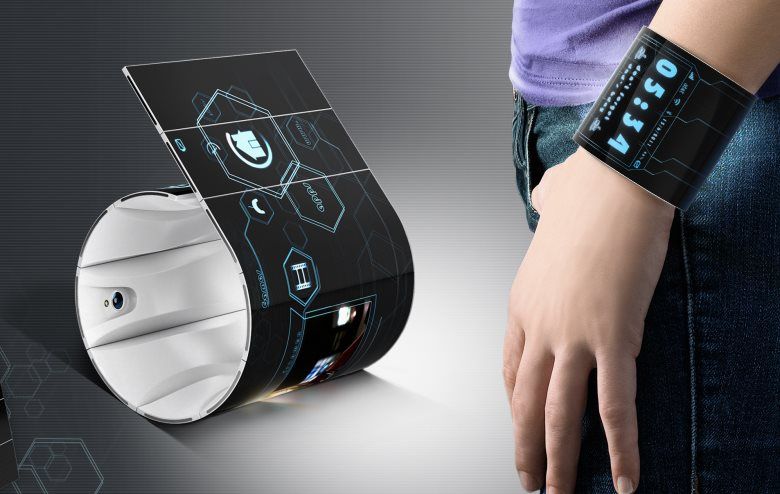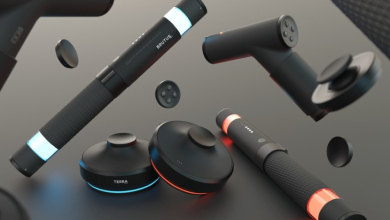Next-Gen Gadgets Transform Daily Tech Use

In today’s fast-paced digital era, next-generation gadgets are not merely conveniences—they have become essential components of our everyday lives. These cutting-edge devices are redefining how we interact with technology, enhancing productivity, and transforming the way we communicate, work, and even relax. With rapid advancements in technology, innovations are emerging that seamlessly integrate into daily routines, bridging the gap between the physical and digital worlds. This article delves into the evolution of next-gen gadgets, examines their profound impact on daily tech use, and highlights the future trends that promise to reshape our lifestyles even further.
The Evolution of Consumer Gadgets
The journey from basic electronic devices to today’s sophisticated smart gadgets is nothing short of remarkable. Over the past few decades, technology has evolved from bulky, single-function tools to sleek, multi-purpose devices that offer connectivity, intelligence, and adaptability. This evolution can be broadly categorized into several transformative stages:
A. Early Innovations
In the early days, gadgets were designed with simplicity in mind. Radios, basic telephones, and early personal computers laid the groundwork for a future where connectivity was key. Although these devices were limited in functionality, they sparked a technological revolution that paved the way for modern innovations.
B. The Digital Revolution
The digital revolution brought about significant changes, with the introduction of the internet, mobile phones, and digital cameras. During this period, gadgets began to merge functionality with digital connectivity, giving rise to devices that could communicate and process information more effectively.
C. The Rise of Smart Devices
In recent years, the proliferation of smartphones, tablets, and wearables has transformed the tech landscape. These smart devices are embedded with powerful processors, sensors, and connectivity options, enabling them to perform complex tasks and integrate with other systems seamlessly.
D. Integration and the Internet of Things (IoT)
The evolution continued with the advent of IoT, where everyday objects are connected to the internet. From smart refrigerators to connected thermostats, IoT has revolutionized home automation and personal convenience, making our environments more responsive and adaptive.
Defining Next-Gen Gadgets
Next-gen gadgets represent the forefront of technological innovation. They incorporate advanced features such as artificial intelligence (AI), machine learning (ML), augmented reality (AR), and virtual reality (VR) to provide intuitive, user-centric experiences. These devices are not only smarter but are also designed to learn from user behavior, adapt to preferences, and offer unparalleled convenience.
Key Characteristics of Next-Gen Gadgets
Next-gen gadgets can be identified by several distinguishing features:
A. Intelligence:
- Integration of AI and ML enables predictive functionalities and personalized user experiences.
- Devices can adapt to user preferences and learn from usage patterns.
B. Connectivity:
- Seamless integration with other devices and platforms.
- Utilizes high-speed internet and IoT networks for real-time communication.
C. Interactivity:
- Touch, voice, and gesture controls provide multiple interaction modalities.
- Enhanced user interfaces and immersive experiences through AR and VR.
D. Portability:
- Compact and lightweight designs make them easy to carry and use on the go.
- Energy-efficient, ensuring longer battery life and minimal environmental impact.
E. Security:
- Built-in security features protect user data and privacy.
- Advanced encryption and biometric authentication are common standards.
Transformative Impact on Daily Life
Next-generation gadgets have a significant impact on various aspects of daily life, from personal productivity to social interaction and beyond. Their influence is evident in several key areas:
A. Communication and Connectivity
The way we communicate has drastically changed with the advent of smart devices. These gadgets allow us to stay connected regardless of geographical boundaries, ensuring that communication is faster, more reliable, and more interactive.
- Smartphones and Tablets: These devices are the epicenter of modern communication, offering instant messaging, video calls, and social media integration.
- Wearables: Smartwatches and fitness bands not only track health metrics but also facilitate quick communication through notifications and voice commands.
- Virtual Assistants: Devices such as smart speakers have become household staples, helping users manage schedules, set reminders, and control smart home devices through voice commands.
B. Enhancing Productivity at Work
Next-gen gadgets are transforming the professional landscape by enhancing productivity and streamlining workflows. Whether in an office or working remotely, these tools empower professionals to perform their tasks efficiently.
A. Remote Communication Tools:
- Video conferencing and collaborative platforms facilitate seamless communication among team members.
- Virtual whiteboards and project management apps enhance team collaboration.
B. Mobile Productivity:
- Portable devices allow employees to work from anywhere, promoting flexibility and work-life balance.
- Cloud-based applications enable real-time document sharing and editing.
C. Automation and AI Integration:
- Intelligent scheduling and task management tools reduce administrative burdens.
- AI-powered analytics provide insights into productivity trends and operational efficiencies.
C. Revolutionizing Home and Lifestyle
Smart gadgets have infiltrated our homes, transforming them into interconnected hubs of convenience and automation. These devices create an environment where technology seamlessly integrates with daily routines, making life simpler and more enjoyable.
A. Smart Home Devices:
- Security Systems: Advanced cameras, doorbells, and alarm systems enhance home security.
- Lighting and Climate Control: Automated lighting systems and smart thermostats optimize energy use and comfort.
- Appliances: Smart refrigerators, ovens, and washing machines offer features like remote monitoring and automated maintenance alerts.
B. Health and Fitness:
- Wearable fitness trackers monitor physical activity, sleep patterns, and vital signs.
- Smart scales and health apps provide comprehensive health analytics and personalized fitness plans.
C. Entertainment:
- Streaming devices and smart TVs offer on-demand content with voice-controlled interfaces.
- VR headsets and gaming consoles deliver immersive entertainment experiences.
D. Transforming Travel and Mobility
Next-gen gadgets are also reshaping how we travel and navigate our environments. With the integration of smart technology into vehicles and public transportation systems, travel has become safer, more efficient, and more enjoyable.
A. Connected Cars:
- Modern vehicles come equipped with advanced navigation systems, real-time traffic updates, and autonomous driving features.
- In-car entertainment and connectivity options transform long journeys into productive or relaxing experiences.
B. Mobile Navigation Devices:
- GPS-enabled smartphones and wearables provide precise navigation and real-time updates.
- Location-based services help users discover nearby attractions, restaurants, and services.
C. Public Transportation:
- Smart ticketing systems and real-time transit updates improve the efficiency of public transportation networks.
- Integration with mobile apps allows for seamless planning and booking of travel itineraries.
The Role of Integration and Ecosystems
One of the most significant advantages of next-gen gadgets is their ability to integrate into broader digital ecosystems. These interconnected systems provide a cohesive experience that enhances functionality and user satisfaction.
A. Creating a Seamless Experience
Integration allows devices to communicate with one another, creating an ecosystem where data flows effortlessly between platforms. This interconnectedness not only simplifies operations but also enhances the overall user experience.
A. Smart Home Ecosystems:
- Devices such as smart speakers, thermostats, security cameras, and lighting systems work together to create a responsive living environment.
- Centralized control hubs allow users to manage all connected devices from a single interface.
B. Wearable and Mobile Integration:
- Wearables sync with smartphones and health apps to provide comprehensive fitness and health monitoring.
- Real-time data transfer ensures that users have immediate access to their personal metrics.
C. Office and Enterprise Systems:
- Integration of collaboration tools, cloud storage, and communication platforms streamlines workflow and enhances productivity.
- Unified systems allow for better management of resources, data, and security protocols.
B. The Power of Data and Analytics
Next-gen gadgets generate vast amounts of data that, when analyzed, offer valuable insights into user behavior, preferences, and trends. This data-driven approach is revolutionizing how businesses and individuals make decisions.
A. Personalized Experiences:
- AI algorithms analyze data to deliver tailored recommendations and experiences.
- User behavior insights lead to improved product design and service offerings.
B. Operational Efficiency:
- Analytics tools help organizations identify inefficiencies and optimize resource allocation.
- Data visualization dashboards provide real-time performance metrics.
C. Predictive Maintenance:
- For smart home appliances and vehicles, predictive analytics can forecast maintenance needs and prevent breakdowns.
- This proactive approach minimizes downtime and reduces costs.
Challenges in Adopting Next-Gen Gadgets
While next-gen gadgets offer numerous benefits, their integration into daily life is not without challenges. Understanding and addressing these challenges is crucial for ensuring that technological advancements lead to positive outcomes.
A. Security and Privacy Concerns
With increased connectivity comes the risk of cyber threats. The more devices are interconnected, the greater the potential vulnerabilities.
A. Data Breaches:
- Smart devices are prime targets for hackers due to the wealth of personal information they handle.
- Ensuring robust encryption and secure data transmission is essential.
B. Privacy Issues:
- Constant data collection can lead to concerns over personal privacy.
- Transparent data policies and user consent protocols are necessary to maintain trust.
C. Vulnerability to Cyber Attacks:
- Integrated systems can become vulnerable if even one device is compromised.
- Regular software updates and security patches are critical in mitigating these risks.
B. Technological Overload
The rapid pace of technological advancements can sometimes lead to information overload and confusion among consumers.
A. Device Compatibility:
- With numerous devices on the market, ensuring compatibility across platforms can be challenging.
- Standardization and interoperable protocols are key to seamless integration.
B. Learning Curve:
- Advanced features and complex interfaces may intimidate less tech-savvy users.
- Comprehensive user training and intuitive design can alleviate these issues.
C. Maintenance and Upkeep:
- The fast pace of innovation means devices can quickly become outdated.
- Regular maintenance, updates, and consumer support are necessary to sustain long-term usability.
C. Environmental and Economic Factors
The production, consumption, and disposal of electronic gadgets have significant environmental and economic implications.
A. Electronic Waste:
- The rapid turnover of gadgets contributes to growing electronic waste.
- Sustainable manufacturing practices and recycling programs are essential to address this issue.
B. Cost Barriers:
- Next-gen gadgets often come with a high price tag, limiting accessibility for some users.
- Market competition and technological advancements may drive prices down over time.
C. Resource Consumption:
- The production of high-tech devices requires rare minerals and significant energy resources.
- Innovations in green technology and energy-efficient designs are vital for sustainable progress.
Future Trends in Next-Gen Gadgets
As technology continues to advance, the landscape of next-gen gadgets is set to evolve further. Several emerging trends are poised to shape the future of daily tech use.
A. Enhanced Artificial Intelligence and Machine Learning
AI and ML will continue to play a pivotal role in shaping next-generation gadgets. Future devices will offer even more personalized experiences, enhanced predictive capabilities, and smarter automation.
A. Personal Assistants:
- Virtual assistants will become more intuitive, handling complex tasks and anticipating user needs with increased accuracy.
B. Smart Home Integration:
- AI-driven home systems will optimize energy consumption, security, and overall convenience by learning from user behavior.
C. Predictive Analytics:
- Devices will leverage predictive analytics to provide insights and recommendations tailored to individual lifestyles.
B. The Expansion of Augmented and Virtual Reality
AR and VR technologies are breaking new ground in both personal and professional settings. These immersive technologies will redefine entertainment, education, and even remote work.
A. Enhanced User Interaction:
- AR devices will overlay digital information onto the physical world, providing real-time context and assistance.
- VR headsets will create immersive environments for gaming, training, and virtual meetings.
B. Collaborative Environments:
- Virtual reality spaces will offer realistic meeting environments, making remote collaboration more engaging and effective.
C. Educational Tools:
- AR and VR will revolutionize education by providing interactive, hands-on learning experiences that transcend traditional classroom boundaries.
C. Advancements in Wearable Technology
Wearable devices will become increasingly sophisticated, evolving from simple fitness trackers to comprehensive health monitors and productivity tools.
A. Health Monitoring:
- Future wearables will offer detailed insights into physical and mental health, potentially alerting users to early signs of medical issues.
- Integration with healthcare providers can lead to more proactive wellness management.
B. Enhanced Connectivity:
- Wearables will seamlessly integrate with other devices, creating a unified digital ecosystem that enhances daily productivity.
- Real-time synchronization with mobile devices and smart home systems will offer unprecedented convenience.
C. Fashion and Functionality:
- The design of wearables will balance aesthetics with practicality, ensuring they are both stylish and highly functional.
D. The Rise of Eco-Friendly Gadgets
Sustainability is becoming a key focus in technology development. Next-gen gadgets will increasingly adopt eco-friendly designs and energy-efficient technologies.
A. Sustainable Materials:
- Manufacturers will prioritize the use of recycled and biodegradable materials in device production.
- Innovations in material science will lead to more durable and environmentally responsible products.
B. Energy Efficiency:
- Future gadgets will emphasize low power consumption without sacrificing performance.
- Energy-harvesting technologies, such as solar charging, may become commonplace.
C. Circular Economy Models:
- Companies will adopt recycling and refurbishment programs to minimize waste and extend product lifecycles.
Real-World Applications and Success Stories
The transformative power of next-gen gadgets is not just theoretical—it is already being witnessed in various industries and everyday scenarios. Here are a few real-world examples of how these technologies are making a difference:
A. Smart Cities
Many urban centers are integrating next-gen gadgets into their infrastructure to create smarter, more efficient cities.
-
Traffic Management:
- Smart sensors and connected traffic lights optimize traffic flow and reduce congestion.
- Data analytics help city planners make informed decisions regarding urban mobility.
-
Public Safety:
- Advanced surveillance systems equipped with AI enhance public security.
- Emergency response systems are improved through real-time data sharing.
B. Healthcare Innovations
Next-generation gadgets are revolutionizing the healthcare sector by providing advanced diagnostic tools, remote monitoring, and personalized treatment options.
-
Telemedicine:
- Smart devices enable remote consultations and continuous monitoring of patients’ vital signs.
- Wearable health monitors alert caregivers to potential emergencies.
-
Robotics and AI in Surgery:
- Robotic assistants and AI-driven imaging tools improve the accuracy and safety of surgical procedures.
- These innovations lead to quicker recovery times and enhanced patient outcomes.
C. Education and Learning
Technology has transformed traditional learning environments. Next-gen gadgets are fostering more engaging, interactive, and personalized educational experiences.
-
Interactive Classrooms:
- Digital whiteboards and tablets facilitate interactive lessons and real-time collaboration.
- Virtual reality environments allow students to explore subjects in immersive, hands-on ways.
-
Remote Learning Platforms:
- AI-powered learning tools adapt to individual student needs, offering customized curricula.
- Seamless integration of various digital resources creates a comprehensive learning ecosystem.
Overcoming Barriers to Adoption
While the benefits of next-gen gadgets are substantial, overcoming the barriers to widespread adoption remains crucial. Addressing these challenges requires a multi-faceted approach involving manufacturers, consumers, and policymakers.
A. Enhancing User Experience
A seamless user experience is vital for encouraging the adoption of new technologies. Companies must invest in intuitive design and robust customer support to ease the transition for users.
A. User-Friendly Interfaces:
- Simple, intuitive interfaces reduce the learning curve and increase accessibility.
- Consistent design language across devices fosters familiarity and ease of use.
B. Comprehensive Support Systems:
- Dedicated customer support and online resources help users troubleshoot issues quickly.
- Regular software updates ensure that devices remain secure and functional.
C. Educational Initiatives:
- Workshops and training sessions can demystify advanced technologies for the average consumer.
- Informative content, including tutorials and guides, promotes better understanding and usage.
B. Building Trust and Security
Security remains a top concern for many users. Establishing robust security protocols and transparent data practices is essential for building trust.
A. Data Protection Measures:
- End-to-end encryption and regular security audits protect user information.
- Transparent privacy policies inform users about how their data is collected and used.
B. Regulatory Compliance:
- Adhering to global data protection regulations builds credibility and trust among consumers.
- Collaborations with cybersecurity experts help in maintaining the highest security standards.
C. User Empowerment:
- Providing users with control over their data fosters a sense of security and responsibility.
- Educating users about best practices in digital security can mitigate potential risks.
Conclusion
Next-generation gadgets are fundamentally reshaping our world by transforming daily tech use into an experience that is smarter, more connected, and highly adaptive. From revolutionizing communication and productivity to enhancing home automation and healthcare, these innovative devices are at the core of a digital transformation that touches every aspect of our lives. Despite challenges such as security concerns and technological overload, the benefits far outweigh the risks, driving us toward a future where technology works harmoniously to improve our quality of life.
As we look ahead, the potential of next-gen gadgets continues to expand. With ongoing advancements in AI, AR/VR, and sustainable technology, the digital landscape is set to become even more integrated and user-centric. The journey of innovation is continuous, and embracing these changes will empower individuals, businesses, and communities to thrive in an increasingly interconnected world.
By staying informed about emerging trends, investing in robust digital ecosystems, and fostering a culture of continuous learning, we can harness the full potential of next-generation gadgets. Ultimately, the transformation they bring is not just about convenience—it’s about building a smarter, more sustainable future where technology enhances every aspect of daily life.





